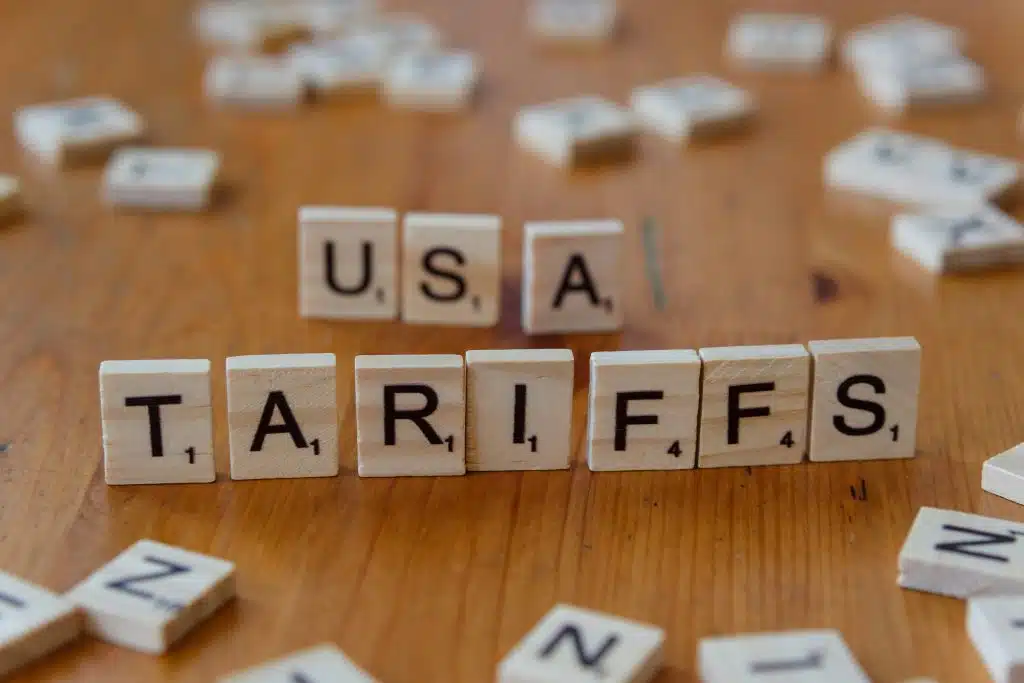HTS codes can be daunting, but they are an essential part of importing products.
Over two-thirds of small American businesses rely on imported goods, whether finished products or materials needed for manufacturing. When an ecommerce company imports these goods, it declares them using a harmonized tariff schedule (HTS) code.
If you’re one of these businesses, it’s a good idea to be familiar with HTS codes and how they will affect the importation process and the price you pay for goods and materials.
What Are HTS Codes?
HTS codes were first implemented by Congress in 1989. An HTS code is a system used to classify products for trade. When importing goods, HTS codes simplify customs and enforce trade regulations.
Each code comprises seven digits, which can be numbers or names. You can find the different codes in the U.S. International Trade Commission’s website.
The Trade Commission’s website divides countries and product classifications into categories (displayed as chapters). Currently, over 10,000 individual codes are assigned to specific items.
How Do HTS Codes Relate to Tariffs?
Since tariffs are taxes on imported goods, ecommerce owners can use the Trade Commission’s guide to find the corresponding code and the rate they must pay.
Let’s say that tomatoes cost 3.9 cents per kilogram. So, businesses must pay the 3.9 cents/kg when importing from countries in the “General” category (countries that have normal trade relations with the U.S.).
But the rate that businesses will pay varies between exporting countries. So, the pay rate can increase to 6.6 cents/kg when importing from countries in the “2” column (countries that don’t have normal trade relationships with the U.S.).
The U.S. maintains free trade relations with specific nations, and businesses can find those countries in the “Special” column. In this example, if a business exports tomatoes from any country code in the “Special” column, they don’t need to pay a tariff.

Who Needs HTS Codes?
Any seller importing products into the U.S. must classify their items with HTS codes for customs clearance. There are many misconceptions about this, given that many U.S. sellers think this is the responsibility of the exporting country.
Even if you don’t import finished products, you must pay tariffs and use HTS codes and pay tariffs if you import any materials or goods used in manufacturing from another country.
What Happens If You Use an Incorrect HTS Code
At the least, improper HTS codes can result in more duties than the tariffs you pay. However, severe cases can result in civil or even criminal penalties. Using the wrong HTS code can result in fees, shipping delays, and even the seizure of your shipment by U.S. border patrol agents.
You can read the full penalties program on the U.S. Customs and Border Protection website. In addition to using incorrect HTS codes, there are penalties for misvaluing and misclassifying goods.
HTS vs HS Codes
HS stands for “harmonized system,” but how do HS codes differ from HTS codes? Like HTS, HS codes are applied to imported and exported goods. The main difference is that HS is a global classification standard, whereas HTS is a system used primarily by the U.S.
The U.S. still uses HS codes to collect and analyze data, and this information is used to produce statistics. HS codes are six digits, though countries can add additional characters for more accurate classification.
HS codes are updated every five years, so ecommerce businesses should regularly check the World Customs Organization (WCO) website to stay updated on current HS codes.
Tips When Using HTS Codes
Classifying imported goods can be challenging for new ecommerce businesses, especially knowing the potential penalties for misclassifying and misvaluing products.
Here are essential tips for choosing the correct HTC codes every time:
Read the General Rules of Interpretation
The General Rules of Interpretation is one of the first documents you will encounter on the USITC website. Six rules cover different parts of the HTS classification. Reading this section to navigate this document and find the correct HTS code is essential.
Narrow Down Your Search
The HTS guide on the USITC website looks intimidating. Start your search by narrowing down the different chapters and subchapters. First, find the general category for your product.
For example, if you’re importing leather bags and cases, start by looking in Chapter 42 (Articles of Leather). Scroll down, find the product you’re selling, and look at the column next to it to see if you must pay a tariff and how much.
It’s also integral to know how much of a tariff you’ll pay for each country. Free Trade Agreements for various countries can be found in the General Notes section.
Read the Notes
Every chapter has a notes section that further explains the goods in the chapter, all of the subcategories you may find, which items the chapter doesn’t cover, and more. It’s a good idea to read this section to ensure the correct products are in the corresponding chapter.

Submit a Request to Customs
There’s no reason to risk an incorrect HTS code, especially since Customs and Border Protection (CBP) is able to help.
You can send a request detailing the items you will be importing. CBP will respond with a Ruling Letter, explaining how to classify your goods. It’s important to note that you must use the HTS code provided by CBP.
Hire an Expert
An ecommerce company can hire and outsource help from experts, such as customs brokers or an international shipping company. These professionals can guide you through the HTS policies and break down the entire procedure of importing your goods.
Tools and Technology
Sellers also have the option to use various tools to find the best HTS code. On the USITC website, sellers can search keywords related to their products to find the information or code they’re looking for.
Many international shipping and freight companies offer tools to cover HS and HTS codes, duties and taxes in various countries, shipping internationally, machine learning technology automatically applying an HTS code, and other compliance best practices.
The Future of HTS Codes
There are always new developments in international trade, so eCommerce business owners should stay aware of new trends and updates in HTS codes. Here are some of the latest predictions:
- New trade agreements. Trade agreements constantly change. The U.S. may end free trade between countries or add new nations to its free trade agreement.
- Conflicts. HTS and HS codes change when there are geopolitical conflicts. Watch for any disputes that arise between nations.
- AI. Machine learning and similar technologies are expediting manual importation processes. All sellers should use AI tools now to stay ahead of the curve.
- Sustainability: The future of trade is green. Sellers should switch to eco-friendly product alternatives, which may come with lower tariffs.
FAQs
Is it necessary to be compliant with the HTS?
Yes, proper HTS codes are necessary. If you’re importing goods from other countries, compliance with the HTS means following the law.
Can HTS codes change?
Absolutely. Global trade is constantly changing, especially with the introduction of new products, advancing technology, and different laws and regulations in various nations.
What’s a Schedule B code?
Schedule B is also a U.S. classification system, but it tracks exports from the U.S., whereas HTS codes track imports and whether or not a tariff must be applied.
Are You Struggling With HTS Codes?
Stakes are high for businesses to use the proper HTS codes. If your company imports products from other countries, you should understand the basics of HTS codes and correctly identify your goods for CBP.
If you’re struggling to find the right HTS code, we offer different services to improve your trade strategy. Reach out to learn more about our global expansion program.
Author
 Stephanie Jensen has been writing ecommerce content for seven years, and her copy has helped numerous stores rank on Amazon. Follow her on LinkedIn for more insight into freelance writing and creating high-quality content.
Stephanie Jensen has been writing ecommerce content for seven years, and her copy has helped numerous stores rank on Amazon. Follow her on LinkedIn for more insight into freelance writing and creating high-quality content.



